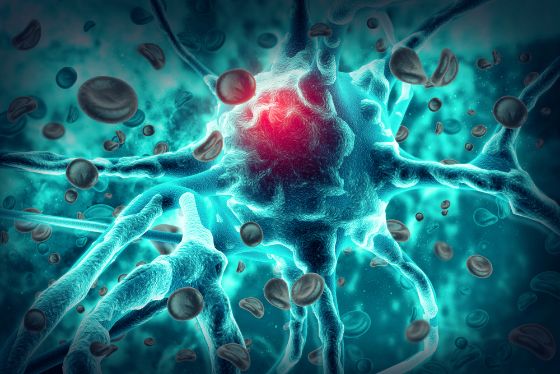Bone marrow cancer is any cancer that starts in the blood-forming stem cells of the bone marrow (the soft, sponge-like material inside most bones). The most common types of blood cancers that start in the bone marrow are leukemias and multiple myeloma.
Stem cells in the bone marrow produce blood-forming cells (white blood cells, red blood cells and platelets). Normally, these cells continue to divide to make new cells. This keeps the number of blood cells in the body within a normal range, which doctors call your blood count. Cancerous stem cells can overproduce and cause too many abnormal blood cells to be made. When these cells circulate in the blood, they may crowd out healthy white blood cells and other types of blood cells, which can lead to anemia.
The first step in diagnosis is taking a complete health history. A physical exam is also usually done. The doctor will ask questions about any symptoms the person has and if there is a family history of bone marrow cancer or other types of cancer. A sample of bone marrow is taken from the hipbone or breastbone under anesthesia with a needle. The bone marrow is then examined under a microscope for signs of cancerous cells.
If the biopsy shows that there are multiple myeloma cancer cells, a series of tests will be performed to confirm the diagnosis and determine what stage the disease is at. A blood test can find antibodies that enter the circulation due to multiple myeloma, which aren’t found in healthy people. Another blood test measures the amount of calcium in the blood, which is often high when a person has multiple myeloma.

Other tests can measure the level of certain proteins in the body, such as creatinine and urea nitrogen, which indicate kidney function. A urine test can find protein called monoclonal spikes that aren’t found in healthy people. These proteins can build up in the blood and prevent the normal immune system from working properly, leading to more infections.
A person with multiple myeloma will have chemotherapy treatments to kill the cancerous cells and keep them from growing. These may be given by injection or through a tube into a vein, called an IV. Chemotherapy may be combined with radiation therapy or surgery to increase its effectiveness.
In some cases, a bone marrow transplant may be needed. This is when a person with bone marrow cancer has high levels of blood-forming cells, called leukemia cells or myeloma cells, that crowd out healthy blood cells. The cancer cells are replaced with healthy bone marrow stem cells from another person or from a donor.
After a patient receives chemotherapy, his or her doctor may recommend total body irradiation. This involves immersing the body in a large dose of radiation using a machine that is designed for this purpose. A person will likely stay in the hospital for several days after total body irradiation. The cancer care team will prepare the person for this treatment by giving them high doses of chemotherapy drugs to kill existing bone marrow cells.








